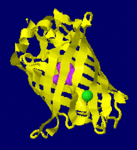

A key new data source is the genome sequence of amphioxus (lancelet, Branchiostoma), the least-derived living invertebrate relative of the vertebrates within the phylum Chordata. Compelling evidence for these events emerged only recently, when the genomic signatures of the 2R-WGD were traced from invertebrates through to humans and other vertebrates. While increased signalling complexity was needed for vertebrate life, these systems also generate vulnerability to genetic disorders.Īround 500 Ma, the vertebrates emerged from a massive evolutionary upheaval that involved two rounds of whole genome duplication (2R-WGD), with additional subsequent WGDs in certain lineages of bony fish and amphibians. We suggest a conceptual model for intracellular regulation involving protein families whose evolution into signal multiplexing systems was facilitated by 14-3-3 dimer binding to lynchpins, which gave freedom for other regulatory sites to evolve. In contrast, the second 14-3-3-binding sites of REEPs 1–4 differ and are phosphorylated by different kinases, and hence the REEPs display different affinities for 14-3-3 dimers. For example, the human receptor expression enhancing protein (REEP) 1–4 family has the commonest type of lynchpin motif in current datasets, with a phosphorylatable serine in the –2 position relative to the 14-3-3-binding phosphosite.

We identify 2R-ohnologue families whose members share a ‘lynchpin’, defined as a 14-3-3-binding phosphosite that is conserved across members of a given family, and aligns with a Ser/Thr residue in pro-orthologues from the invertebrate chordates. The present study shows that the human 14-3-3-binding phosphoproteome is highly enriched in 2R-ohnologues, which are proteins in families of two to four members that were generated by two rounds of whole genome duplication at the origin of the vertebrates. 14-3-3 proteins regulate cellular responses to stimuli by docking onto pairs of phosphorylated residues on target proteins.


 0 kommentar(er)
0 kommentar(er)
